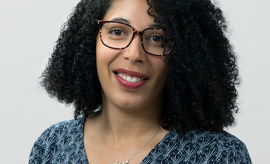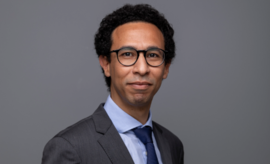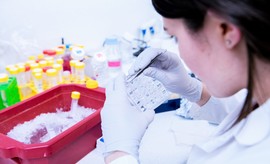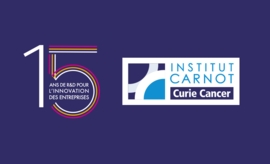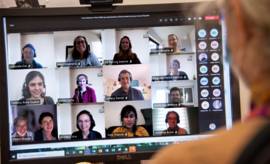A confirmed success for Institut Curie's patented inventions
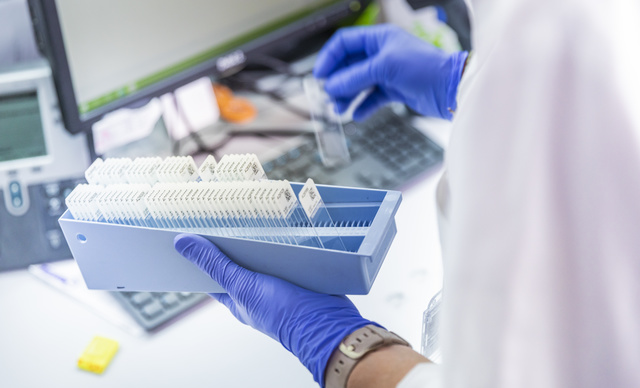
"Patenting is at the heart of the Curie spirit," says Amine Naimi, French patent attorney and head of the Intellectual Property Division of Institut Curie's Technology Transfer Office. This clear and passionate statement reflects Institut Curie's strong strategy over the past ten years to promote its medical and scientific discoveries and ultimately transform research into concrete therapeutic or diagnostic solutions for patients and healthcare professionals.
While academic research allows promising scientific results to emerge that will undoubtedly have an impact on society, these discoveries are generally at a relatively early stage of development and need to be "matured" before leading to the marketing of a technology, product or service. Protecting inventions through intellectual property, and more specifically by filing a patent, is an essential first step in this process called technology transfer.
What happens to patented inventions?
At Institut Curie, the importance of detecting innovations and transferring technologies is reflected in the work of dedicated legal and valorization teams who advise and support inventors from the Research Center or the Hospital Complex. This close and optimal follow-up produces tangible results and the figures are impressive:
An active portfolio of nearly 800 patents and 400 invention declarations since 2011, a total of 56 patents granted in 2021, etc. These excellent figures illustrate, of course, the excellence of the research and care carried out at Institut Curie, as well as the relevance of the strategy implemented in terms of intellectual property, but not only. Above all, the inventions that emerge from Institut Curie respond to unmet medical needs and are sufficiently robust to be transferred and lead to innovative technologies whose socio-economic value is continually proven.
explains Cécile Campagne, director of Institut Curie’s Technology Transfer Office and deputy director of Carnot Curie Cancer.
Indeed, if Institut Curie's intellectual property policy is particularly fruitful because it is based on robust and innovative scientific results, it is above all effective. It allows the thirty or so inventions protected each year to leave the walls of Institut Curie to be developed by economic players so that they can ultimately benefit patients. What happens to these patented inventions?
- They are licensed[1] to an industrial company that will develop the technology by providing skills that are not part of academic research (development, prototyping, industrialization, regulations, market access, etc.). Of the total patent portfolio managed by Institut Curie, 70% of patents older than 30 months are transferred to industry.
- They lead to start-up creation: a key path of moving from an invention to an innovation that meets unmet market needs and benefits the greatest number of people. 28 start-ups have already been created by Institut Curie since 2002 on the basis of patents developed by its researchers and caregivers. In total, these companies have generated more than 50 products or services on the market and created nearly 250 jobs.
- They encourage partnerships with companies that accelerate the development of the technology and bring it to a more advanced stage of maturity. Over the past ten years, more than 500 research collaboration contracts have been signed, generating more than 140 million euros.
In addition to their undeniable socio-economic impact, these different ways of commercialization are united by a common point: they are essential to the perpetual progress of research. Indeed, they guarantee financial returns for the inventors and, more broadly, for Institut Curie, enabling these revenues to be reinvested in research and opening the way to new therapeutic or diagnostic solutions for patients. "This is the virtuous circle of technology transfer," concludes Cécile Campagne.
[1] A license is a contractual procedure where a company assigns or sells the rights to use a trademark or patent to a third party, the licensee.
TWO EXAMPLES OF SUCCESSFUL PATENTED INVENTIONS |
The KDOG project: breast cancer detection using the smell of dogs
This unique medical innovation research project offers a new, simple, inexpensive and non-invasive technique for early detection of breast cancer using the sense of smell of dogs. Conceived in 2013 by Isabelle Fromantin, a nurse and researcher at Institut Curie, it is now pursuing its development through a clinical study evaluating the ability of dogs to detect breast cancer. Institut Curie has just filed a new patent protecting the cones designed specifically for the testing methods integrated into the clinical trial. These cones contain the samples presented to the dog. Thanks to its training, the dog sits and remains static when it detects an "abnormal" smell. This protection will ensure the creation of a reliable, defined and reproducible method, which will then allow the earliest possible detection of breast cancer. |
Extracellular vesicles to fight triple negative breast cancer
Clotilde Théry's "Extracellular vesicles, immune responses and cancer" team at Institut Curie has just shown, for the first time and unexpectedly, that extracellular vesicles in tumors induce macrophages that could promote anti-tumor responses. This work, published in the journal PNAS on April 20, 2022, was the subject of a patent application filed by Institut Curie and Inserm. This protection now accompanies Clotilde Théry's team in the pursuit of this promising work in order to open the way to new and more effective therapeutic solutions to fight triple-negative breast cancer. |



